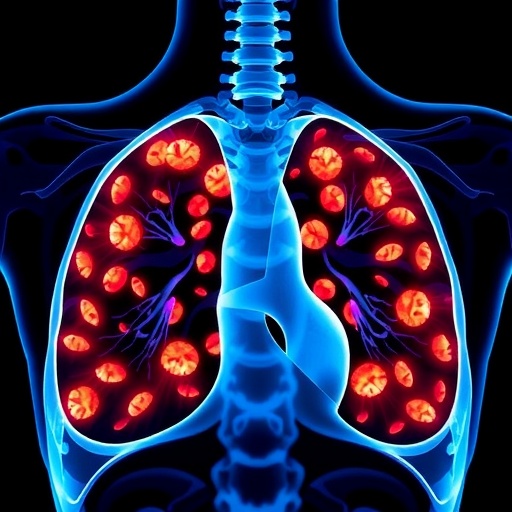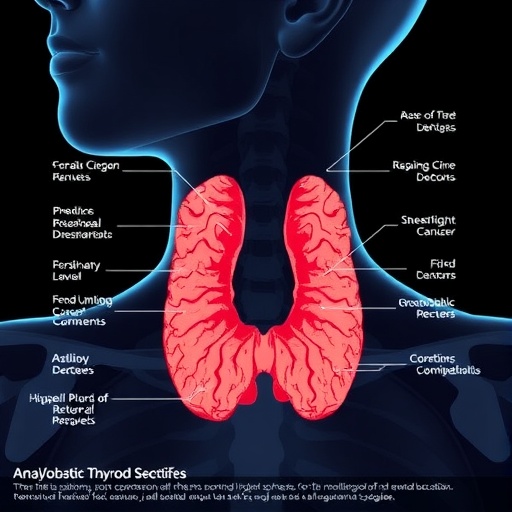A newly published study delves into the molecular underpinnings of endometrial carcinoma (EC), revealing a pivotal role for the SIM bHLH transcription factor 2 (SIM2) in driving the malignant behaviors of EC cells. This breakthrough offers promising avenues for the development of prognostic biomarkers and innovative therapeutic targets aimed at improving outcomes for patients suffering from this prevalent gynecologic malignancy. By integrating advanced genomic analyses with rigorous laboratory experimentation, the research elucidates how SIM2 orchestrates tumor progression, metastasis, and the microenvironmental landscape of EC.
Endometrial carcinoma remains a significant global health challenge, representing one of the most frequent cancers affecting women’s reproductive systems. Despite advances in surgery and adjuvant therapies, survival rates plateau due to frequent recurrence and metastasis. Identifying molecular players that contribute to tumor aggression and poor prognosis is critical. The current study harnesses large-scale transcriptomic datasets from esteemed cancer repositories including The Cancer Genome Atlas (TCGA) and Gene Expression Omnibus (GEO) to dissect gene expression alterations unique to EC pathogenesis.
The authors employed cutting-edge bioinformatics tools to sift through thousands of gene candidates, utilizing differential gene expression profiling and weighted gene co-expression network analysis (WGCNA). By focusing on functionally interconnected gene modules associated with EC tumorigenesis, the study isolates a subset of 343 genes strongly correlated with disease progression. This systems biology approach transcends traditional single-gene analyses, instead unveiling complex gene networks that drive malignant phenotypes in EC.
To refine their findings toward clinical relevance, the team applied the least absolute shrinkage and selection operator (LASSO) regression technique, a statistical method well-suited for high-dimensional data. This enabled the identification of a robust panel of 13 prognostic genes, including SIM2, that can stratify EC patients into distinct risk groups. Such stratification holds significant promise for tailoring surveillance and treatment protocols based on molecular risk profiles, potentially enhancing precision oncology for EC.
SIM2 emerged as a particularly compelling target due to its markedly elevated expression in EC tissues relative to normal controls and its strong association with adverse clinical outcomes. Previously recognized primarily for developmental roles, SIM2’s oncogenic function in EC opens new research horizons. Comprehensive in silico analyses utilizing resources such as GEPIA, Human Protein Atlas (HPA), and LinkedOmics databases corroborated the overexpression and prognostic significance of SIM2 in EC.
The mechanistic impact of SIM2 was rigorously interrogated in vitro through genetic manipulation experiments in EC cell lines. Knockdown of SIM2 induced profound growth inhibition, triggering cell cycle arrest and apoptotic cell death. This was evidenced by reduced proliferation metrics in CCK-8 assays, alterations in flow cytometric analysis reflecting increased apoptotic fractions, and molecular shifts including elevated cleaved caspase-3, a hallmark of apoptosis. Conversely, forced overexpression of SIM2 enhanced proliferative capacity and suppressed cell death pathways, highlighting its oncogenic potential as a driver of tumor cell survival.
At the protein level, SIM2 modulated key regulators of cell cycle progression, notably Cyclin D1 and CDK4, proteins that are essential for the G1 to S phase transition. The downregulation of these proteins following SIM2 silencing elucidates a pathway by which SIM2 promotes unchecked cellular proliferation, a central hallmark of cancer. These findings integrate SIM2 into the broader molecular circuitry governing EC tumor growth and suggest its influence extends to fundamental cell cycle machinery.
Crucially, the tumor microenvironment was shown to differ markedly between patient groups defined by the expression of the prognostic gene panel, particularly SIM2. Significant variations in immune cell infiltration patterns were observed, implying that SIM2 not only drives intrinsic tumor cell behaviors but may also reshape the immune landscape to facilitate immune evasion or suppression. Such insights underscore the multifaceted nature of SIM2’s oncogenic roles and highlight potential interactions with immunotherapeutic strategies.
In vivo experiments employed sophisticated lung and liver metastasis models to validate the functional role of SIM2 beyond cell culture. Silencing SIM2 markedly diminished the ability of EC cells to colonize distant organs, a critical step in cancer progression and mortality. These results provide compelling evidence that targeting SIM2 could impede metastatic dissemination, addressing a pressing clinical challenge in EC management.
Taken together, the study positions SIM2 as both a prognostic biomarker and a therapeutic target with significant translational potential. The ability to predict patient outcomes based on SIM2 expression levels could refine clinical decision-making, facilitating earlier interventions for high-risk individuals. Moreover, therapeutic modalities designed to inhibit SIM2 function may suppress tumor growth and metastasis, ultimately enhancing patient survival.
This research also underscores the power of integrative omics and computational biology in unmasking cancer drivers previously overlooked. Through the strategic merging of public genomic repositories, advanced statistical modeling, and experimental validation, the authors deliver a comprehensive portrait of SIM2’s role in EC. Such multidisciplinary approaches exemplify the future of cancer biomarker discovery and drug target identification.
Future investigations are warranted to unravel the detailed signaling pathways downstream of SIM2 and to explore its interactions with other oncogenes and tumor suppressors within the EC molecular landscape. Additionally, understanding how SIM2 modulates immune responses may pave the way for combinatorial therapies incorporating immunomodulators.
In conclusion, the identification of SIM2 as a key molecular orchestrator in EC progression highlights a promising new frontier for cancer diagnosis and therapy. By bridging molecular biology with clinical relevance, this work paves the way toward more personalized and effective management strategies for women battling endometrial carcinoma, potentially transforming prognosis and quality of life.
Subject of Research: Molecular mechanisms driving endometrial carcinoma progression and identification of prognostic biomarkers.
Article Title: SIM2, associated with clinicopathologic features, promotes the malignant biological behaviors of endometrial carcinoma cells
Article References: Nie, H., Chen, Y. SIM2, associated with clinicopathologic features, promotes the malignant biological behaviors of endometrial carcinoma cells. BMC Cancer 25, 666 (2025). https://doi.org/10.1186/s12885-025-14077-0
Image Credits: Scienmag.com
DOI: https://doi.org/10.1186/s12885-025-14077-0
Tags: bioinformatics in oncologycancer gene expression profilingendometrial cancer survival ratesendometrial carcinoma researchgenomic analyses in cancer researchmetastasis in gynecologic malignanciesmolecular mechanisms of ECprognostic biomarkers for ECSIM2 transcription factorThe Cancer Genome Atlas datatherapeutic targets for endometrial cancertumor progression in endometrial cancer





